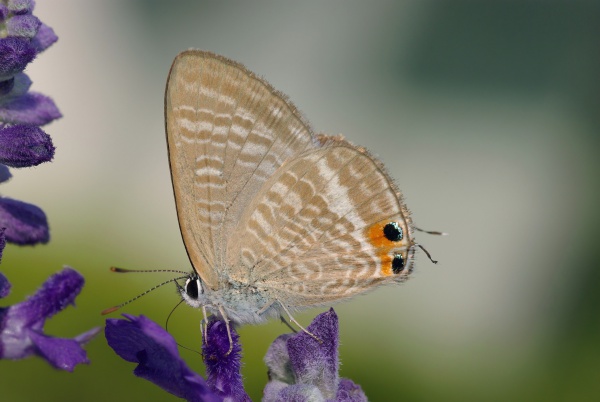Facts About Lampides boeticus
The Lampides boeticus, commonly known as the pea blue or long-tailed blue, is a charming small butterfly belonging to the lycaenids, also known as the gossamer-winged family. The species name, boeticus, refers to an ancient Roman province in present-day Spain and Portugal. The common name derives from the butterfly's long tail-like extensions on its hind wings, the stunning blue color of the male, and its preference for pea plants as a food source.
These butterflies are often found in habitats such as forest edges, mountain meadows, and sunny, flower-filled areas at altitudes up to 2,700 meters above sea level. Male pea blues feature a predominantly blue-violet hue with brown edges on their upper wings, while females exhibit less blue coloration. Both males and females possess the distinctive long tails on their hind wings and have easily recognizable markings on the underside of their wings.
These butterflies are not just visually appealing—they are also highly active. They can produce up to three generations per year and are known for their extensive range of travel. They are active from February to early November. Females lay their eggs individually on the flower buds of their host plants. Upon hatching, the larvae feed on a variety of plants from the Fabaceae family, such as Medicago, Crotalaria, Polygala, Sutherlandia, Dolichos, Cytisus, Spartium, and Lathyrus. Interestingly, in Australia, you may even find ants tending to the larvae.

 Syria
Syria